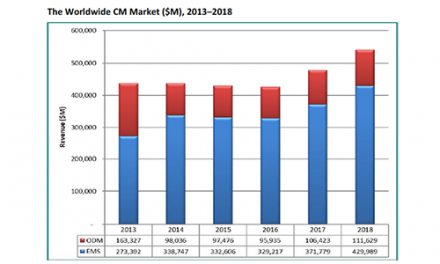Generative Engineering in Smart Manufacturing

By Pierce Owen, Principal Analyst at ABI Research
BEYOND TOPOLOGY OPTIMIZATION
Industrial companies have used geometric topology optimization for several years now and are using it more because they have increased the use cases for Additive Manufacturing (AM). Topology optimization involves changing the geometric shape of a product given a set of constraints to improve its performance. Generative design takes this up a step by creating, or generating, the geometric shapes from nothing rather than changing the existing shapes. Generative engineering takes this to another level. It not only creates the geometric shape but can also create entire systems architectures and fit the electrical systems. Let’s take a car as an example. Given the right constraints and rules, generative engineering can design the architectural configurations for the chassis, the power train, the mechanical structures and components, the wiring harnesses, and the electrical system. Of course, like any form of Artificial Intelligence (AI), it works best when guided by a domain expert or, in this case, a real-life human engineer.
EXPANDING DESIGN POSSIBILITIES
Generative design and generative engineering expand design possibilities by using AI to create shapes different from those that humans would create. It idealizes the design by creating something that best fits the constraints to optimize the products for various requirements. Still, this does not matter if the company cannot build the product in the real world. The generative engineering software must also provide or integrate with software that provides production simulation to ensure buildability. In general, AI-designed products require AM to capture the complex geometries. The designs often require further refining for traditional manufacturing. This means that generative tools provide the most value for products that use AM but can still provide incredible value to those that do not use AM. Also, some vendors provide tools to consider all the designs and processes available for cost purposes. This empowers manufacturers to figure out the business case for a new design. If the cost exceeds the value of the design, the manufacturer can tweak the constraints, such as the materials, to get to a favorable cost/value balance. Some of the best vendors will also allow for integration with Internet of Things (IoT) product data. This opens a feedback loop whereby the manufacturer can use data from its products in the real world to train the generative networks for future designs. Many companies have started IoT initiatives for this very reason.
RECOMMENDATIONS FOR GENERATIVE ENGINEERING VENDORS
To flexibly adapt to industrial clients’ needs and to help them achieve scale, generative engineering vendors must: • Set expectations. When describing generative engineering, it almost sounds as if it can design superior products autonomously. AI has not yet quite reached that level; realistically, an engineer using this tool will likely always design superior products than AI and the tool by themselves. Vendors should help their clients to understand what they can augment: what can be done better with generative engineering and what would require more human input? Even in cases where generative engineering can help, these solutions work best when they are guided by a human engineer.
- Look at products holistically. While generative design can provide value by improving the shape of one component, vendors who combine generative engineering tools that can create entire systems architectures and fit them with optimized electrical engineering expand that value. Each step should be synced with production simulation software to ensure buildability.
- Provide tools to easily prioritize different variables. When clients first start using generative design, they often want to improve performance by reimagining specific parts to cut the weight or increase the stiffness. Every generative engineering product should make it easier for users to prioritize these variables and to set limits on them. For example, the user may have decided to sacrifice stiffness for less weight—but only to a certain extent. This user should have the ability to set a limit on how much stiffness to sacrifice. Vendors could also help clients by empowering them to set limits on the build or on the cost of materials.
- Integrate with a tool that can accurately estimate build cost and provide maintenance cost allowance. Like any technology, a client will only scale generative engineering if there is a business case for it. To help clients figure this out, vendors should estimate build cost by comparing the new design with older designs and forecast the amount the improved design could save in maintenance costs. Will the new design result in a longer, useful life? If so, for how much longer? Will this help your clients compete and win greater market share among their target customers? Programs that can make these predictions accurately will help generative engineering solutions scale.
Following this strategic guidance should help generative engineering vendors and their clients implement scalable solutions.
About Pierce Owen:
As a Principal Analyst at ABI Research, Pierce Owen is responsible for research and analysis surrounding smart manufacturing and the Industrial Solution. His research focus includes IT/OT convergence, digital twins, and additive manufacturing.
About ABI Research
ABI Research provides strategic guidance for visionaries needing market foresight on the most compelling transformative technologies, which reshape workforces, identify holes in a market, create new business models and drive new revenue streams. ABI’s own research visionaries take stances early on those technologies, publishing groundbreaking studies often years ahead of other technology advisory firms. ABI analysts deliver their conclusions and recommendations in easily and quickly absorbed formats to ensure proper context. Our analysts strategically guide visionaries to take action now and inspire their business to realize a bigger picture. For more information about ABI Research’s forecasting, consulting and teardown services, visionaries can contact us at +1.516.624.2500 in the Americas, +44.203.326.0140 in Europe, +65.6592.0290 in Asia-Pacific or visit www.abiresearch.com.












